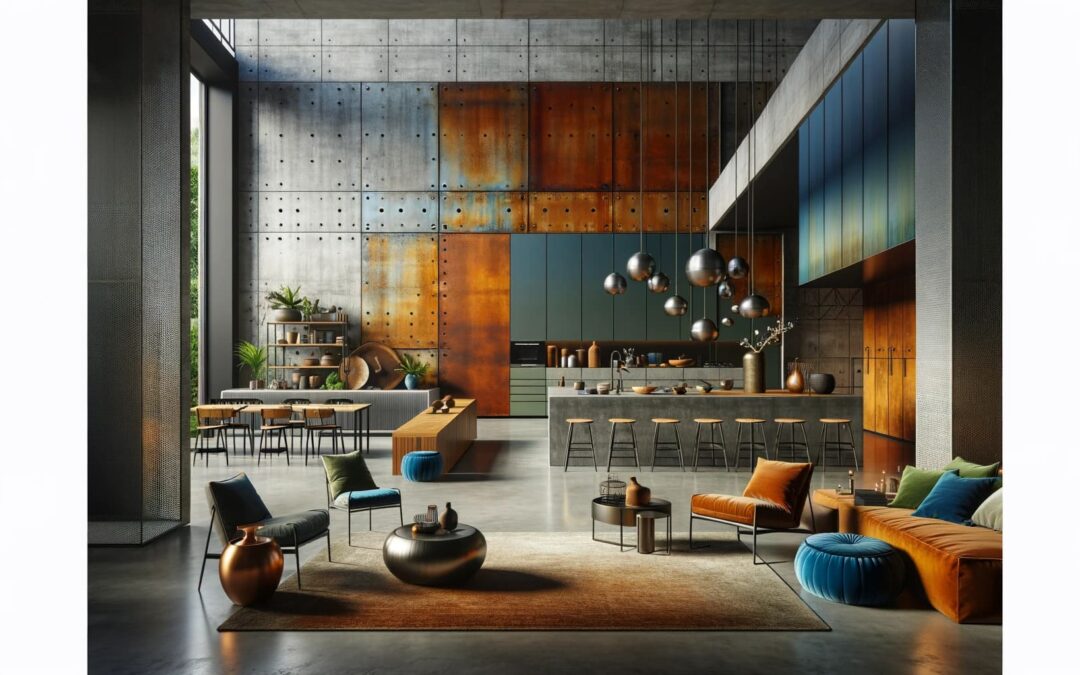In the ever-evolving realm of interior design, the industrial style has maintained its popularity due to its striking blend of raw textures and sleek modernism. This aesthetic is particularly appealing for those who appreciate a space that reflects both architectural character and contemporary finesse. As this style continues to evolve, incorporating innovative materials and colors can keep your space feeling both current and timeless. Here’s how to achieve that balance in your modern industrial home.
Embracing New Materials
1. Polished Concrete: While concrete is a staple in industrial design, polished concrete is a newer iteration that adds a glossy, refined finish to floors, countertops, and even furniture. Its reflective surface can help lighten up the typically dark and moody industrial palette, making spaces appear larger and more open.
2. Cor-Ten Steel: Known for its weathered, rust-like appearance, Cor-Ten steel is not just for exterior cladding. Inside, it can be used for staircases, fireplaces, and as a striking backsplash in kitchens. Its rich, earthy tones provide a warm contrast to the cooler greys and blues commonly found in industrial interiors.
3. Recycled Plastics: Sustainability is as much a part of design trends as aesthetics. Recycled plastics are being transformed into everything from decorative tiles to stylish furniture. Offering a pop of color and a conversation piece about your eco-friendly choices.
4. Composite Stone: Composite stone is a manufactured material that mimics the look and feel of natural stone but offers more uniformity and durability. This makes it ideal for creating large feature walls or sleek floorings that require less maintenance than natural stone.
Innovative Color Palettes
1. Deep Greens and Blues: Moving away from the standard neutral tones, deep greens and blues add a layer of sophistication and modernity to industrial spaces. These colors work well with raw materials like wood and metal, bridging the gap between natural elements and urban chic.
2. Burnt Sienna and Terracotta: These warm earth tones bring a hint of the outdoors inside and are perfect for softening the hard edges of an industrial design. They pair beautifully with metals and can be used for accent walls, rugs, and textiles.
3. Monochrome Shades: Black, white, and grey remain popular but consider using varying shades to create depth and interest. For instance, a charcoal grey sofa against lighter grey walls can add a dynamic yet harmonious look to your living room.
4. Vibrant Accents: For a bolder approach, incorporate vibrant accents in your decor. Think bright mustard yellows, electric blues, or fiery reds that stand out against a predominantly neutral backdrop. These pops of color can introduced through artwork, cushions, or unique decorative items.
Final Thoughts
Updating your industrial home with these innovative materials and fresh color schemes can transform it into a space that feels both modern and inviting. Remember, the key to a successful industrial interior is maintaining a balance between old and new elements, ensuring that your home feels cohesive yet distinctly personalized. By integrating these contemporary materials and colors, you can create a living space that is not only aesthetically pleasing but also uniquely yours.

